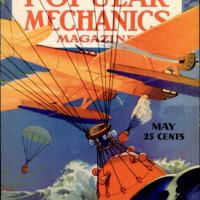Long-Distance Gas Detector Sends Warning by Wire
Item
- Title (Dublin Core)
- Long-Distance Gas Detector Sends Warning by Wire
- Article Title and/or Image Caption (Dublin Core)
- Long-Distance Gas Detector Sends Warning by Wire
- Language (Dublin Core)
- eng
- Temporal Coverage (Dublin Core)
- World War II
- Date Issued (Dublin Core)
- 1940-05
- Is Part Of (Dublin Core)
-
 Popular Mechanics, v. 73, n. 5, 1940
Popular Mechanics, v. 73, n. 5, 1940
- pages (Bibliographic Ontology)
- 652
- Rights (Dublin Core)
- Public Domain (Google digitized)
- Source (Dublin Core)
- Google books
- References (Dublin Core)
- Johns Hopkins University
- Archived by (Dublin Core)
- Enrico Saonara
- Alberto Bordignon (Supervisor)
- Spatial Coverage (Dublin Core)
- United States of America

